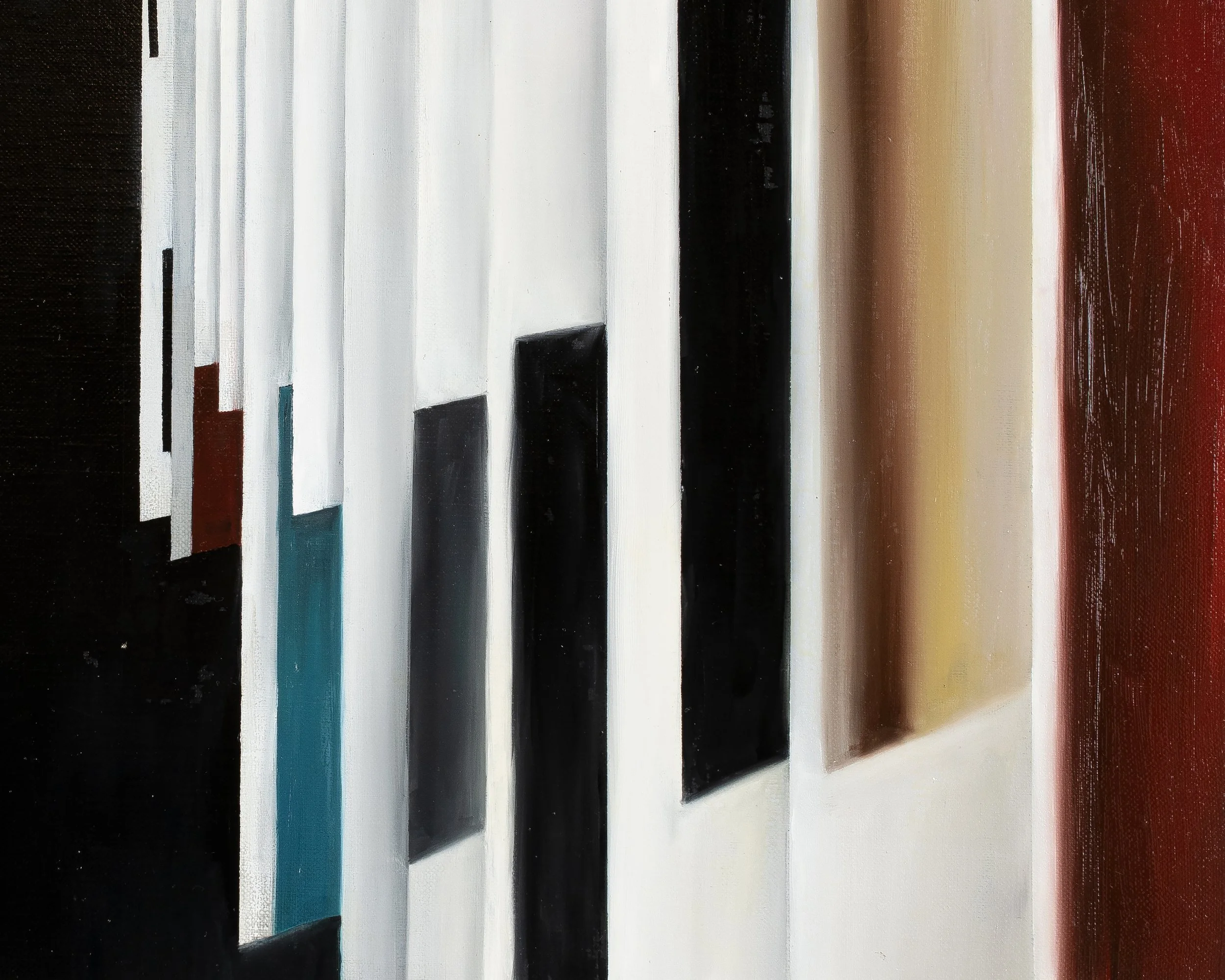Web, 2021
Web, 2021
Oil on linen
18 x 24 inches / 45.7 x 61 cm
In today’s world, people constantly absorb, share, and process vast amounts of information. The rise of computers and digitalization has made instant communication and multitasking the norm. Web (2021) depicts the reality of multitasking and information overload in the digital age. The composition presents multiple overlapping windows, symbolizing the multi-window workflow that has become second nature to modern individuals. These windows contain news, entertainment videos, social media, online forums, and emails, forming a fragmented yet familiar reflection of our daily online lives. The black background represents the virtual space of the internet, while the floating windows act as fragmented pieces of the digital experience—both familiar and abstract. This work not only explores how information is disseminated, but also addresses the societal transformation brought about by the digital revolution. As the world transitions from an industrial economy to a knowledge-based one, the ability to manage and access information has become central to modern life, fundamentally intensifying our dependence on information systems and their governance.
Q: Web explores themes of information networks and a media-driven society. Could you share the inspiration and creative background behind this piece?
Tan Mu: The inspiration for this piece comes from my experience of living in a media-driven society, where the dissemination of information and visual news plays a crucial role in our daily lives. We exist within a dense web of information, constantly exposed to news, advertisements, and countless digital pages. This work seeks to capture the fleeting moments of this information flow and translate them into a visual language.
Q: Web captures the moment of a page transition. What significance does this moment hold for you?
Tan Mu: I am deeply fascinated by temporality and the nature of fleeting moments. Like my other works, The Splash of a Drop 1 and Trinity Testing, this piece captures a transient visual effect—one that often marks a turning point in history. The Splash of a Drop 1 depicts the moment a water droplet splashes, symbolizing the profound impact of photography on visual art. Trinity Testing captures the seconds of a nuclear explosion, representing humanity’s entry into the nuclear age. Web, on the other hand, freezes the instant a browser transitions between pages, underscoring the rapid evolution of the internet and information technology. Though these moments are brief, they ripple outward like waves, shaping the trajectory of human civilization. The internet and nuclear energy are two of the most transformative forces of our era. The internet has revolutionized how we access and share information, while nuclear energy holds immense potential and destructive power. Both have profoundly shaped modern life, bringing forth both progress and challenges. Through these works, I explore the power of fleeting moments and how they define our time and future.
Q: The composition features multiple floating pages. Could you elaborate on the visual design of this effect?
Tan Mu: The floating pages in the composition symbolize our browsing experience, particularly the moment of page transitions in a web browser. Initially, I depicted multiple overlapping pages on the canvas, including news articles, advertisements, and even logos from media outlets like CNN. However, I later chose to simplify these elements, transforming some text and logos into abstract color blocks to enhance the composition’s abstraction and universality. The layered, floating effect mirrors the way we visually perceive webpage transitions. I used a dark background to make the foreground pages stand out, creating a striking contrast. This approach aligns with my previous works, such as Silicon and Logic Circuit, which also utilize layered compositions and deep contrasts. The dark background not only enhances the depth of the scene but also represents the complexity and vastness of information networks. Meanwhile, the floating pages capture the fragmented, transient nature of digital browsing.
Q: Your composition makes extensive use of straight lines and rectangular shapes. What is the significance of these elements?
Tan Mu: The use of straight lines and geometric forms reflects the structured and systematized nature of the modern visual experience. Unlike the organic curves and flowing shapes prevalent in Impressionist works, contemporary visual culture—especially since Cubism—has leaned toward rectilinear structures and rigid geometries. This tendency is not only evident in digital interfaces but also in the design of our built environment and everyday objects. Through this geometric composition, I aim to distill the essence of modern visual perception and encourage viewers to reflect on the aesthetic and cognitive shifts in our era’s visual culture.



